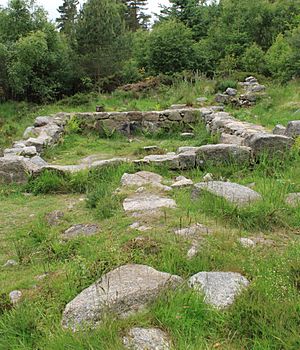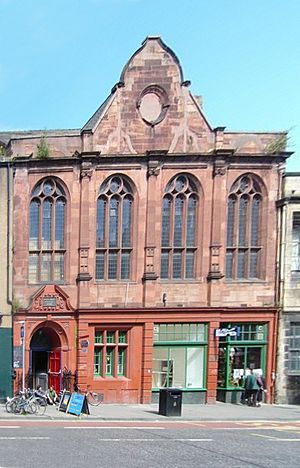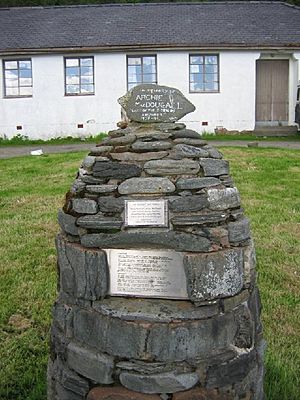Squatting in Scotland facts for kids


Squatting in Scotland means living in a building or on land without the owner's permission. In Scotland, this is against the law, specifically under the Trespass Act of 1865.
Over the years, people in Scotland have squatted for different reasons. Sometimes it was to claim land during difficult times, like after the Highland Clearances. More recently, people have squatted to protest against new roads or as part of movements like Occupy.
Contents
History of Squatting
Squatting has a long history in Scotland. Even in ancient times, during the Iron Age, there were cases of people settling on land without official permission.
In 1865, the Trespass Act made squatting illegal in Scotland. Even so, not many people have been taken to court for it. Between 2007 and 2011, only about 13 cases went to court each year.
Land Raids: Claiming Land
After the Highland Clearances, when many people were forced off their land, some groups carried out "land raids." This meant they would take over land they believed was rightfully theirs. These raids happened in rural areas of Scotland in the late 1800s and early 1900s.
One famous example is the Vatersay Raiders. These people lived in very poor conditions on the islands of Barra and Mingulay. They decided to occupy land on Vatersay in 1908. The landowner, Emily Gordon Cathcart, took them to court. They were sent to prison for two months. However, there was a big public outcry, and they were soon released. The government eventually bought the island and divided it into small farms called crofts for the families.
Another well-known event was the Seven Men of Knoydart land raid in 1948. This was a protest to draw attention to the need for land reform on the Knoydart peninsula.
The Colony was another unique case. For about 100 years, starting in the 1830s, people lived on common land in the Bennachie hills without official ownership.
After World War II, in 1946, a new wave of squatting happened in places like Edinburgh, Glasgow, and Peterhead. People occupied empty army camps and even the former German consulate in Glasgow. The 1865 Trespass Act was used to prosecute some of these squatters.
Recent Squatting Events
In more recent times, squatting has often been used as a form of protest.
Road Protests
Two notable squatting actions were part of protests against new roads. The Pollok Free State was a camp that tried to stop the M77 motorway from being built through Pollok Country Park. Another camp at Bilston protested against the building of a bypass.
Community Spaces and Climate Action
In 2011, the former Forest Café in Edinburgh was briefly occupied by about 100 people. They were protesting because they felt there weren't enough community spaces in the city.
As part of the global Occupy movement in 2011, land was occupied by groups like Occupy Glasgow and Occupy Edinburgh.
During the 2021 United Nations Climate Change Conference (COP26) in Glasgow, a vacant building called the Hamish Allan Centre was occupied. It was renamed Baile Hoose and provided a place for people attending the conference to stay. This action was supported by some, including Patrick Harvie, a government minister. However, Glasgow City Council said the building was unsafe and got a court order for the activists to leave. After four weeks, the activists left peacefully.
See also
- Homelessness in Scotland


